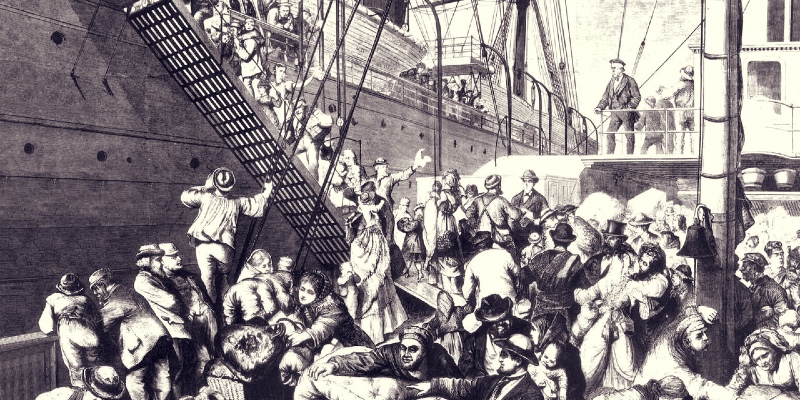Since I was little, I’ve been raised on stories of my parents’ history and the controversial romance between my mother, the daughter of South Indian immigrants, and an Irish-German nobody from the green ridges of Tennessee. You might say there was friction on both sides of the family tree over an unlikely union that nobody expected or wanted, except for the couple themselves. It was a marriage for love that—thirty-six years later—is one of the proudest things in my life.
But my parents were always about something bigger than society’s norms, and both of them encouraged me from an early age to take both what you see and hear with a huge grain of salt, and to go the extra mile to find out the truth of a matter regardless what the popular opinion is. When I came up with the idea of a South Indian detective-of-sorts in nineteenth-century New York, I thought at first it was surely too improbable to be tolerated. But “truth is stranger than fiction,” as the maxim goes, and what I discovered in researching the time period surprised me as much as my parents’ experiences.
It’s certainly no secret that North America is a hotspot for immigration. Perhaps you’ve heard the heartbreaking stories of those early immigrants from all over the world, the Chinese and the Irish among the largest communities to suffer prejudice in the country they hoped to call home. But according to an article by the Migration Policy Institute, there were Indians as well among these early 19th century immigrants.
A look at Indian immigration to the United States reveals a dark thread in the rich tapestry of their history. Many of the immigrants were from the Punjab region, which had been annexed by the British in 1849, forcing many in the midst of political strife to seek a better, more stable life in Canada. At first, the condition of these immigrants was peaceful and profitable as they worked in the rising lumber industry. However, the peace did not last.
An article I found on the KQED Asian Education Initiative website, described the rising tension between the Indian immigrants and the European settlers in Canada. Tensions rose so high that finally, any ships with Indian passengers were barred from docking at Vancouver. And the Indians already on Canadian land were once more placed in the position of seeking a new home, a new way of life, this time in the United States.
It’s fascinating to imagine all this—turbaned Sikhs working alongside other immigrants to build up a sustainable infrastructure for their growing communities. But the thing is, it’s not just imagination. As inspiring as the thought may be, although the Indians did indeed prove themselves to be tireless and skillful workers and an intrinsic part of society, even marrying into Mexican Californian families, the discrimination did not end.
The number of Indian immigrants was relatively small compared to others—about three thousand arrived at Angel Island by the time the 1917 law restricting immigration was passed. It was as late as 1946 when Indian immigrants were recognized for the first time as American citizens. This victory was a huge landmark in ensuring the rights of a people that had placed their hope in a country that denied them naturalization for over a hundred years.
All this aside—did you even know that Indians were immigrants to the United States in the nineteenth century? I certainly didn’t. My mother, an Indian immigrant herself who arrived in New York when she was six years old, had no idea that her people had helped form the roots of this nation. There are very few artistic explorations of this fascinating history, either in movies or books, and it isn’t mentioned in history at school. Why the silence? Is it really just because so many people like myself simply don’t know how diverse immigration to America truly was and continues to be?
I’m encouraged by emerging writers like Brinda Charry, whose historical novel The East Indian explores Indian immigration to Jamestown, Virginia, long before the United States even became a nation. The complex issues of racism and the desire for belonging are themes that may be a familiar part of the historical record, but are as important to us now as they were then. Too many of us continue to struggle to belong in the very neighborhood we were born in.
My own book may be fantasy—a historical mystery with a vampire accused of murder, for goodness’ sake! But the themes I explore in it are very real. It’s the artificial division between peoples based on race or social status that continue to be the cause of so much friction.
Radhika Dhingra, the heroine of The Vampire of Kings Street, is looking to establish herself as a working woman in a society prejudiced against both her sex and the color of her skin. She finds unlikely comradeship in her undead client, likewise shunned by greater society. It’s the kind of story that I most enjoy—two unlikely people from different backgrounds, suffering similar hardships, learning to respect and value each other not based on their differences but on the obstacles they can and do overcome together. These are the stories history is often silent about, a story that belongs to my parents and to many others. It’s a story that will always be worth telling, because it’s a story of tremendous courage, and friendship that overcomes every prejudice.
***


















